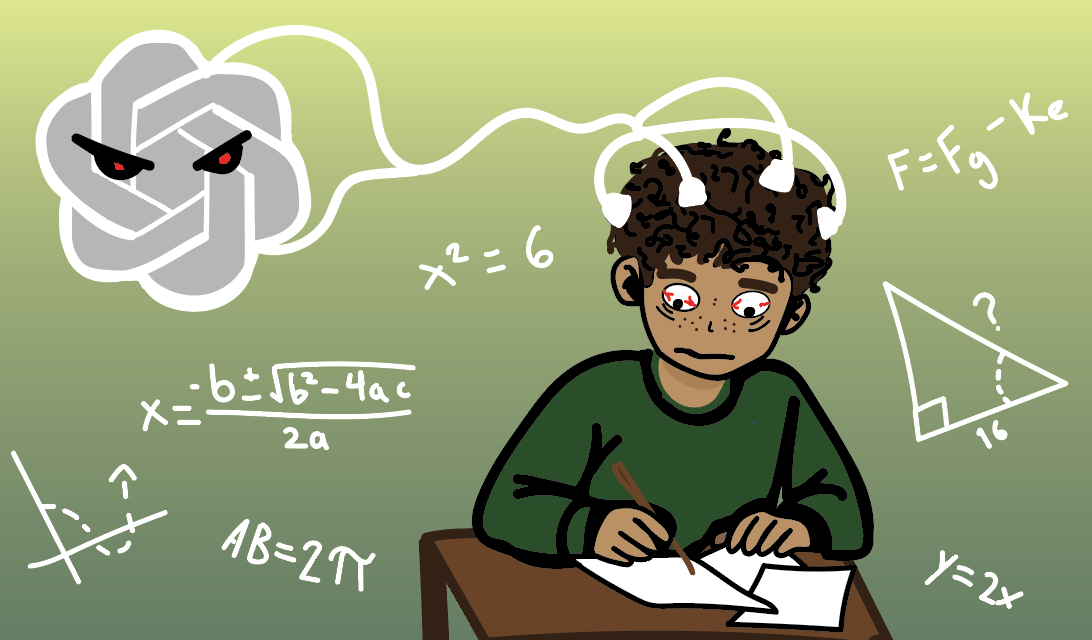David’s Law: The Effect of Bullying on School Campus
January 4, 2018
The tragedy of a young life lost has blossomed into an act for justice with the introduction of David’s Law, an anti-cyberbullying law making it illegal to commit acts of bullying over any media.
With the new law in place, along with a pledge towards anti-cyberbullying, these actions are a step towards ending the use of media for negative reasons.
“The story is of a young man who was bullied until he took his own life and there can be nothing more tragic than that,” principal Mark Robinson said. “His parents took this initiative and worked with lawmakers to get a law passed.”
Originally, schools could do nothing about what occurs outside of the grounds, meaning behavior outside of classes was something they couldn’t be involved with.
“All David’s Law does is give administrators more power over those situations so if it is impacting what happens at school, then we’re able to get involved where as before we couldn’t,” Robinson said.
Students will now be held accountable for their actions, on campus or off.
“[David’s Law] forces people to realize the implications of their actions, even if it is online,” English II teacher Whitney Shumate said. “It can affect the whole school if students are made aware of the consequences that will actually take place.”
Educating students on cyberbullying and the legal effects of it is the next step in implementing David’s Law.
“There has to be something built into our curriculum to encourage students to be responsible in their online presence,” Shumate said. “It seems like a lot of students believe that nothing bad will happen to them.”
This also means defining bullying; What constitutes as bullying and what may be just “mean” are two completely different things.
“What teachers can do is educate students about what bullying is and isn’t and when they see it occur or brought evidence of it to be able to get the administrators involved to be able to stop it,” Robinson said.
For Shumate who has witnessed students taking light of the subject firsthand, teaching must be intentional on explicitly explaining behavioral expectations and making a clear line between right and wrong.
“I have had multiple students come and show me videos of others that they know, and that they don’t know, being humiliated or hurt, and it’s often shown to me with the expectation that I will laugh or think that it’s okay,” Shumate said.
According to sophomore Charlie Ferguson who has experienced bullying first hand, a typical form found on campus is justifying someone doing an action they did not commit, whether in person or over social media.
“When people do that it’s like they’re trying to justify being mean to them,” Ferguson said. “Sometimes it may be based off a misunderstanding of some sort that’s completely untrue or an over exaggeration of something.”
In Ferguson’s opinion, David’s Law being more about bullying as a whole is what will make it the most effective.
“David’s Law is originally centered around cyberbullying but I like how it’s a bit more expansive and being directed toward more bullying as a whole,” Ferguson said. “The whole concept of David’s Law is raising awareness in a way.”
The experience of being bullying is different for each individual, making it dangerous to a person’s well-being no matter who the student is.
“In the moment [of being bullied] you sort of feel like you’re in danger, it depends on how severe the situation is but it feels like you don’t want to show your face because you feel like someone’s looking for you or out to get you,” Ferguson said.
Dealing with the consequences of verbal bullying over physical bullying have varied for many years.
“Physical bullying was a lot easier to address and punish because a lot of times students would pretend they were joking if it was being done through speaking,” Shumate said.
In the classroom, teachers can now watch for signs of verbal bullying and aggression before it can be covered up as “joking”.
“I think that’s a really important thing to keep in mind for teachers and administrators to look for signs of that kind of relational aggression in the classroom, because there should definitely be consequences for that and not just physical aggression,” Shumate said.
A recurring problem with bullying is the act of victims letting it go, seeing it as something not so important to keep pushing for help. According to AISD Licensed Mental Health Professional Cristine Hanlon, that’s where problems worsen.
“We need to actually tackle the problem and not let it go, we need to speak up,” Hanlon said. “If a student is experiencing that then they need to find someone they trust and who will listen to them and not let it go.”
For the new law to work, the first action must be from a student or parent speaking out about the action.
“I like to make sure that students and parents, and school staff even, are aware that if a student is being bullied, no matter if it’s social media or in person, that the school district has a clear procedure to follow for that and it starts with the student and/or parent complaint,” Hanlon said.
Even though this law may cause people to reconsider bullying over the media, the problem of bystanders is still very evident.
“We still have too many bystanders, bystanders that stand by and look and don’t say anything,” counselor Nona May said. “We also have too many victims who take the hurt and they don’t say anything.”
However, David’s Law isn’t defined as clearly as it could be which causes the public to not have a clear view of its benefits.
“As a new law, it needs to be defined more clearly so people have an idea of how this law can help them and protect them and then people need to take it seriously,” May said.
Being so new, details like bystanders are not addressed, making it difficult to handle bullying cases and all the factors that come along with it.
“Right now, the law says if anybody feels uncomfortable about what is said to them, said about them or sent to them, they can have action on it,” May said. “Everybody’s perspective is unique to them, so we have a law now that is all over the place.”
For now, David’s Law does not have a clear point on what it can truly be effective towards.
“What is harassment? What is bullying? Right now, anything and everything kind of falls under David’s Law,” May said.
Despite the few flaws, David’s Law is a step in the right direction for the safety of victims and justice towards bullying over media or in person.
“I think what David’s Law does is it empowers our staff here and it empowers our adults here to actually follow through with bullying that was not considered ‘real’ bullying in the past years,” Shumate said. “Kids won’t feel as empowered to harass people because they know that there will be consequences, even if it’s online.”









